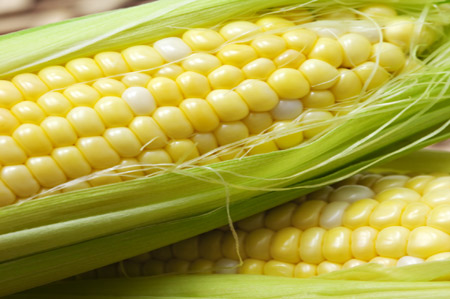Cold, wet spring hinders corn, which could drive up prices
Category: Grains
 (DesMoines Register) – U.S. farmers will produce slightly less corn this year as a wet planting season and cool temperatures reduce yields, the U.S. government said Wednesday.
(DesMoines Register) – U.S. farmers will produce slightly less corn this year as a wet planting season and cool temperatures reduce yields, the U.S. government said Wednesday.
The U.S. Department of Agriculture estimated corn production for 2013 at 14.005 billion bushels — still a record but down slightly from the 14.14 billion bushels estimated last month. Corn yields were trimmed to 156.5 bushels per acre from 158 bushels predicted in May.
Despite rapid planting during mid-May, the government said, weather has delayed sowing in the western Corn Belt, raising “the likelihood that seasonally warmer temperatures and drier conditions in late July will adversely affect” the crop during important stages of growth.
“There is a long way to go. This set of numbers is being viewed with a chuckle” by traders and other market watchers, said Darin Newsom, a senior analyst with DTN. “There are absolutely going to be changes. At this point it seems like there was no accounting for the weather that we saw in May. In fact, (USDA) threw in the towel on soybeans and didn’t change a single number.”
In its monthly report, the USDA stuck to its estimates of soybean acres planted at 77.1 million acres, yield at 44.5 bushels per acre and production at a record 3.39 billion bushels.
Analysts speculate that farmers unable to plant corn may switch a small amount of their acres to soybeans that can be planted later in the season or leave the fields empty and collect government-subsidized crop insurance. They also expected an additional cut in corn yields by at least another bushel in the near-term, leading to a further drop in the size of the corn harvest this fall.
Don Roose, president of U.S. Commodities Inc. in West Des Moines, said there is significant uncertainty about what the acreage figures really look like. “There is a lot of confusion on acres, and so rather than making any significant changes, what they were really doing is waiting for the June 28 report, when we have a better idea,” Roose said.
Wet conditions and cool temperatures so far this year have left many farmers behind schedule in planting their crops, with slow development in fields that are planted. The eastern Corn Belt appears to be in good shape, but parts of Iowa, South Dakota, Nebraska, Minnesota and other states in the western Corn Belt are being hit hard. “Good areas are making up for the poor” corn conditions so far, Roose said.
A separate USDA report released Monday showed that, as of June 9, Iowa farmers had planted 92 percent of their corn crop and 60 percent of their soybeans. Normally by this time of the year, Iowa farmers would have planted 99 percent of their corn and 95 percent of their soybeans. Similar conditions also are evident throughout the United States, with 95 percent of the corn and 71 percent of the soybeans planted.
“There are some really wet areas across Iowa. We’ve already damaged this (corn) crop,” said Craig Hill, president of the Iowa Farm Bureau Federation. “If you were able to get to the field today at this stage of the game, considering the yield losses that you would suffer, a lot of farmers would opt not to plant and take the crop insurance guarantee.”
In Iowa, he estimated about 1 million acres won’t be planted, with another 1 million lost collectively from fields where not all of the crop survived.
In the report issued Wednesday, the USDA estimated that U.S. corn stockpiles at the end of next summer would total 1.949 billion bushels, a decline from 2.004 billion in the May estimate, still the largest total in almost a decade.
Despite the decline, the number was higher than analysts had predicted, indicating there will be plenty of corn to rebuild inventories depleted by last year’s drought. If realized, the plentiful supply would be welcome news for corn users, including ethanol plants and livestock producers, who coped with high maize costs in 2012. Soybean stockpiles, which are very low, would see a sizable jump to 265 million bushels at the end of next summer, unchanged from the government’s projection last month.
Grain prices declined after the government report was released. Corn futures for the July delivery fell 9-1/4 cents to $6.50-1/4 a bushel at the Chicago Board of Trade. New-crop December corn, after the harvest has occurred, slumped 13 cents to $5.37-3/4. The July contract for CBOT soybeans fell 3/4 of a cent to $15.39-3/4 a bushel, while November beans for the new crop dropped 12-3/4 cents to $13.14-1/4.




